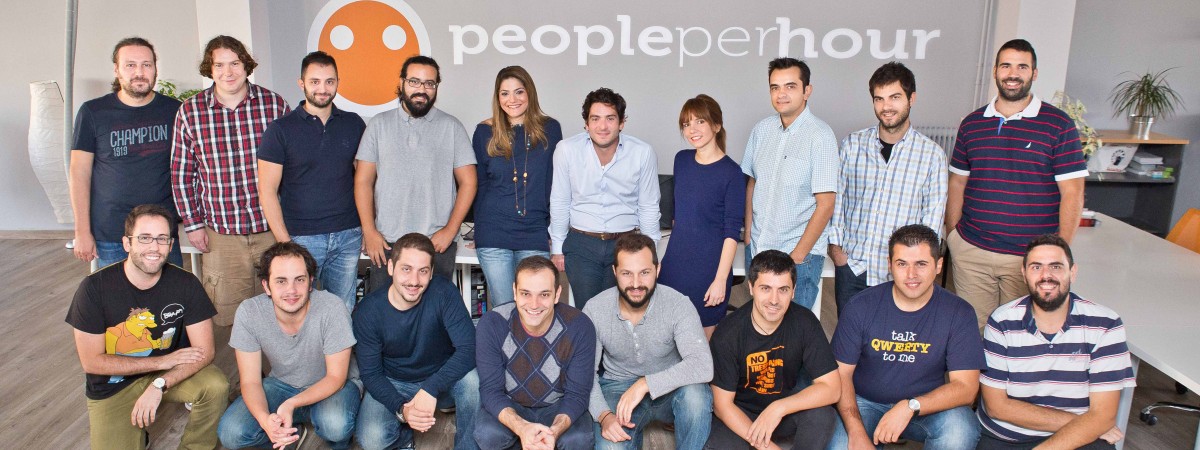The Future of Work: the evolution of labor marketplaces
Operating in the labor / outsourcing space for almost 10 years now (first with an offline business and then online) this is something I’ve spent a lot of time thinking about and in many ways have been part of its evolution. What does the Future of Work look like? In this post my aim is to highlight the trends that I think will shape it versus the applications and solutions it will manifest itself in.
- The West-East playing field will level out
The outsourcing industry has its origin in the labor rate arbitrage between developed and developing economies. The first labor marketplaces like Elance & Odesk were in essence online versions of the Wipros & Infosys’ of this world, connecting businesses in the more developed Western economies with cheaper labor where it was abundant in the East, mainly in IT services. They emerged to piggy back on the newly minted IT industries in India in the 90s.
That rate arbitrage is narrowing today as the economies of India & China and other emerging markets are growing faster than the West inflating prices (including that of labor) and hence closing the gap.
Secondly, as these economies mature they start developing a middle class and an SMB (Small & Medium Sized Businesses) sector – the backbone in any economy that’s the essential channel for distribution of wealth downward from the gorillas at the top of the food chain – the big corporations and national institutions.
Much like those gorillas, these SMBs turn to the west to adopt some of the best practices that have matured over decades. The ‘freelance consultant’ is to those SMBs what the McKinseys of this world and the Harvard MBA franchise has been to the gorrilas at the top. They hire them to help with the things they are weakest in, from basics like writing sales and marketing collateral, design & UI, to business management advice social media marketing and so on.
PeoplePerHour.com was founded largely on this premise. From the start we focused on nurturing a freelance workforce in the West which is still over 70% of our total. Most of hiring happens ‘semi-locally’ (i.e. not onsite , the work sill gets done remotely, but in same geographic region) or from companies in the emerging economies hiring talent in Europe or the US.
As I argued in a previous post I also believe that this may well be the rebirth or the once might export economy of Western nations. With manufacturing on the decline and unable to compete with lower cost economies in the East, the next wave of exports may well be skills and services that are more in abundance in the West and scarcer in emerging markets, the gap being bridged by the emergence and growth of online labor marketplaces.
- Marketplaces 3.0: the rise of End-to-End (e2e) solutions
We are entering what I believe is the third generation of marketplaces. The ‘1.0’ era was all about liquidity (Craiglist). ‘2.0’ was about building trust via reputation systems, social validation (eBay, Airbnb, Etsy) to help in the discovery process as inventory exploded making discovery more challenging. Now, ‘3.0’ is making discovery redundant or unnecessary altogether (you don’t interview your taxi driver on Uber or Lyft and equally you don’t select your tasker on SuperTasker). These are what have been termed e2e solutions, going deeper at both ends – supply & demand – to remove friction in the experience.
Work platforms – from job boards like Monster.com, Classifieds like Craiglist to the first iteration of freelance workplaces and anything in-between – have, by and large, been products of liquidity so far. Meaning the software that connects the two ends (in this case Employer with Job Seeker) is fairly light (think Craigslist), the workflow management is thin or non-existent, and the barriers to users onboarding are very low. Basically anyone can jump on, much like anyone can list their property on Airbnb. Consequently, liquidity is high but at the expense of consistency in quality. Anyone who’s used Craigslist or other classified sites will know that the experience is very ‘hit and miss’ – you get hundreds of responses to an ad, littered with lots of junk but in-between there are some gems if once has the patience to persist and weed them out.
As software and data science develops it’s facilitating a wave of applications and services that go deeper, more ‘end to end’ between the two parties to deliver a more ‘hit and hit’ experience and reduce friction. Fundamentally liquidity is needed to compensate for lack of precision. It’s statistics versus calculus. It’s taking comfort in numbers to deliver an outcome. It’s a scattergun versus a shotgun approach. Ideally you don’t want any liquidity you want 1 response – the right one. But of course for that to happen you need complexity in the background, the magic ‘black box’ in the middle that delivers that laser focused result. Easier said than done
At PeoplePerHour we recently relaunched our platform after a good 6 months of work (which we dubbed PPH 3.0) to take this problem seriously as no one else is in our space we feel. We have as a result become much more end to end starting from strict curation on the supply side. We are no longer open to everyone. We now only accept 10% of applicants (on the freelancer side) through and we request a lot more info: social validation, video interviewing done on mobile or online and skills validation. Secondly, past that first screening we apply strict on-boarding rules for what we have defined as a 3 month ‘qualifying period’. Freelancers need to hit certain metrics on quality and success in order to get past that stage at which point they are officially in. Finally, even once a freelancer is through, we apply on-going ‘up or out’ rules meaning the freelancers need to keep it up in order to stay on the platform and the ones that fare at the bottom of the scale keep getting replaces by fresh talent. So the quality longer term keeps going up.
There’s a great article written by Anand Iyer on How Modern Marketplaces like Uber & Airbnb buld Trust to achieve Liquidity in which he argues (rightly I believe) that a lot of the onus falls on careful curation on the supply side to improve quality and consequently establish trust. I couldn’t agree more. A lot of our competitors boast about the size of their freelance workforce when in fact it’s a digital graveyard. Supply or inventory in any marketplace is irrelevant if it’s stale, inactive or irrelevant. There is so much more to be done on the supply-side including educating freelancers to be successful and creating tools for them to win which are all part of the same end-to-end philosophy.
Conversely on the demand side (the Buyer in this instance) going more end-to-end means removing friction in choice, price and quality. Buyers are poor judges of all three in the main use case. Defining what work should be (as opposed to leaving them to their own devices of make an informed decision) is what’s needed. It’s creating in essence the first SKUs for work. That’s what we’ve done with SuperTasker– fundamentally a collection of a small number (for now) SKUs of digital work where the outcome, the price, the delivery time is pre-set and the supply is tightly curated to deliver to a set standard. Whilst this may not work for every kind of labor (there will always be room for the niche and the arcane which the ‘long tail’ in more traditional marketplaces serves very well) but we believe that more standardization into SKUs is need at the head of the tail where still the vast majority of work resides. That’s the mission of SuperTasker
The same principles are being adopted in other verticals very successfully, such as Beepi (e2e marketplace for cars), Lofty (high end antique items), Washio (dry cleaning), HomeJoy (cleaners) and more to come.
- From transactional & SAAS models to ‘S+SAAS’
With this trend to commoditization, standardization and productization of services new revenue models will emerge that will price in not just the software and the workflow efficiencies it delivers but also the labor component. Hence Service+Software as a Service
Currently the two are decoupled. You either pay for software of you pay for labor. But the more we commoditize and standardize the more the two will be intrinsically interlinked. To standardize at scale you need very specialized software and a labor force that will operate on it very proficiently so it would make sense for the customer to pay for one thing: its one and the same end value proposition.
At SuperTasker we already started experimenting with this. We recently just launched a S+SAAS model for one of our most popular SKUs: small WordPress fixes (typically done in less than 1 hour) For just $39 per month you can now get unlimited small fixes per month. For that price you get the software with the inbuilt workflow, the full end-to-end solution with tightly curated supply AND the labor element built all built in to one fee. We feel that this removes yet another friction element in the buying process.
We are very excited to be innovating and experimenting in this way.If this succeeds the way we envision it to we will no doubt be adopting the same model to other verticals and SKUs. If not, we will have no doubt learnt some interesting lessons on the way.
- The rise of hyperspecialization
In a past post I wrote about hyper specialization inspired by an article (and a book) written by Harvard Business School professor Thomas Maloney called ‘The big Idea: the age of Hyperspecilaization’. The central thesis of that idea is that the role of ‘generalists’ is very quickly becoming obsolete. Markets and functions as we know them are becoming increasingly more complex. Startups are global from day 1, operate across a myriad of channels and platforms each of which has its own rules of the game.
To achieve scale these companies will need to evolve and break down roles from traditional ‘command and control’ to the management of distributed networks of hyperspecialized workers. At any given time the person most suited for a very speceilized function or job may be across the world. They may only be able to perform that highly specialized skill – which is what ruled them out from traditional employment as we know it. But as labor in the cloud and the networks that connect them mature, finding and hiring that person on the spot for just that function will become second nature top us.
Consequently jobs will be broken down to finer and finer constituents that can be delivered much better by people who are hyperspecialized. Much like what happened in the industrial revolution when a blacksmith’s role was broken down into many smaller jobs along a conveyor line. This naturally unleashed massive efficiency gains, leads to standardization of the output and uniformity in cost and other inputs of production.
Afterthoughts
Writing this post alone reminds me of why I love my job so much. We get the luxury of operating in a fascinating space, that’s largely at its inception, with so much room for innovation and growth. And in all the years that past, we’ve built some great products, a great team and we are just at the beginning of a journey that will no doubt bring more innovation and great products. While having fun along the way! What else can one want?

















Great article!
Thanks for finally talking about >Thhe Future of Work: the evolution of labor marketplaces – Xenios blog <Loved it!